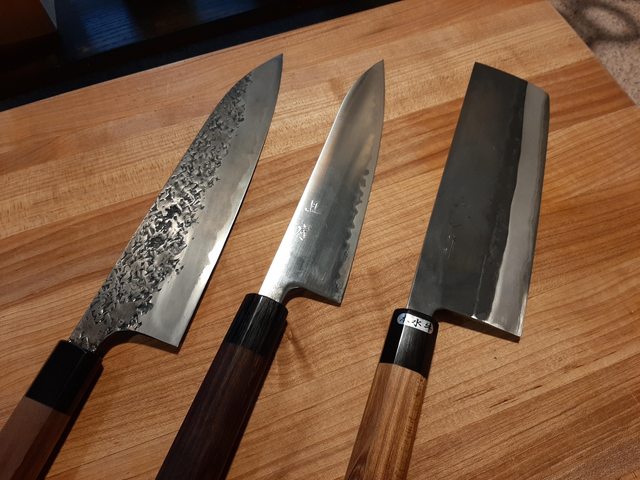Xunzi
Well-Known Member
Am I right that a tall blade have the following pros/cons:
Pros: Easier to scoop up food, provides more real estate for non-dominant hand knuckles, all else equal provides more weight so will be more stable and drift less when cutting big things
Cons: More drag/resistance, all else equal poorer food release, less nimble for precision cutting
If this is right - wouldn't it make sense to have taller blades for big things (cabbages etc), shorter blades for small things (tomatoes etc). All else equal of course.
Apologies if I'm asking something obvious here.
Pros: Easier to scoop up food, provides more real estate for non-dominant hand knuckles, all else equal provides more weight so will be more stable and drift less when cutting big things
Cons: More drag/resistance, all else equal poorer food release, less nimble for precision cutting
If this is right - wouldn't it make sense to have taller blades for big things (cabbages etc), shorter blades for small things (tomatoes etc). All else equal of course.
Apologies if I'm asking something obvious here.
Last edited:

























